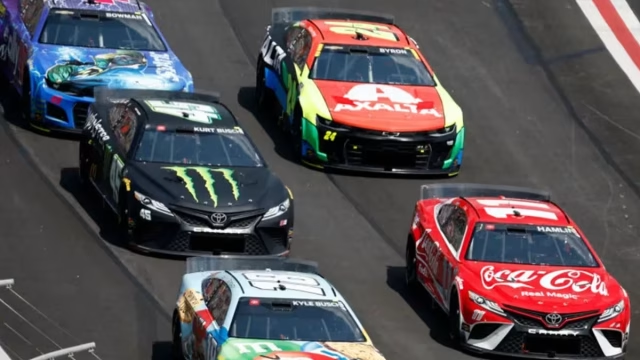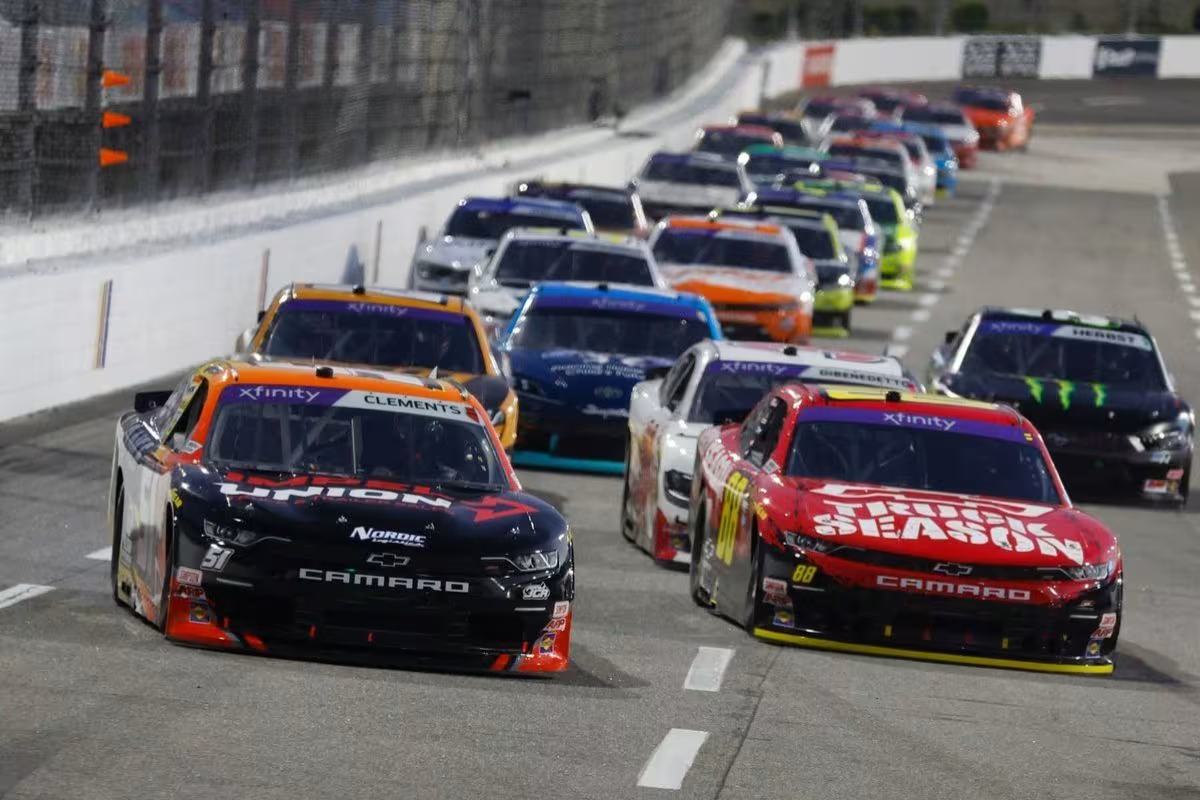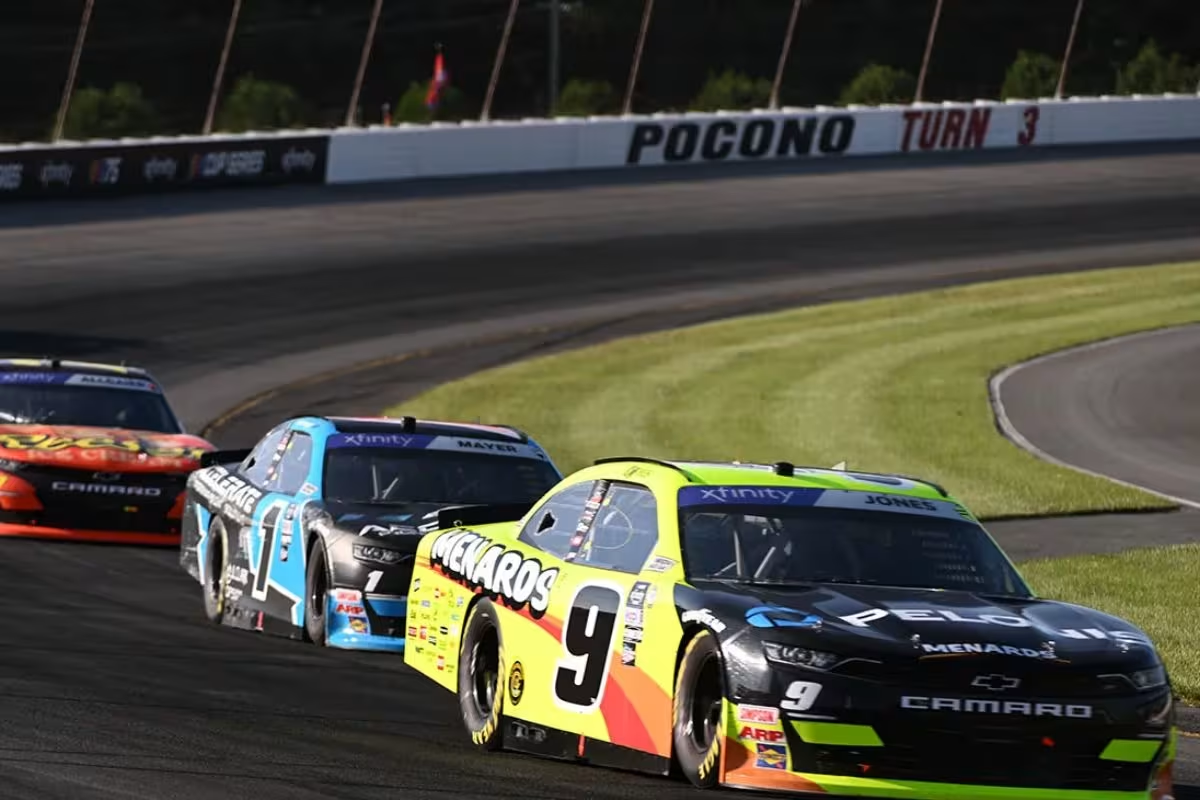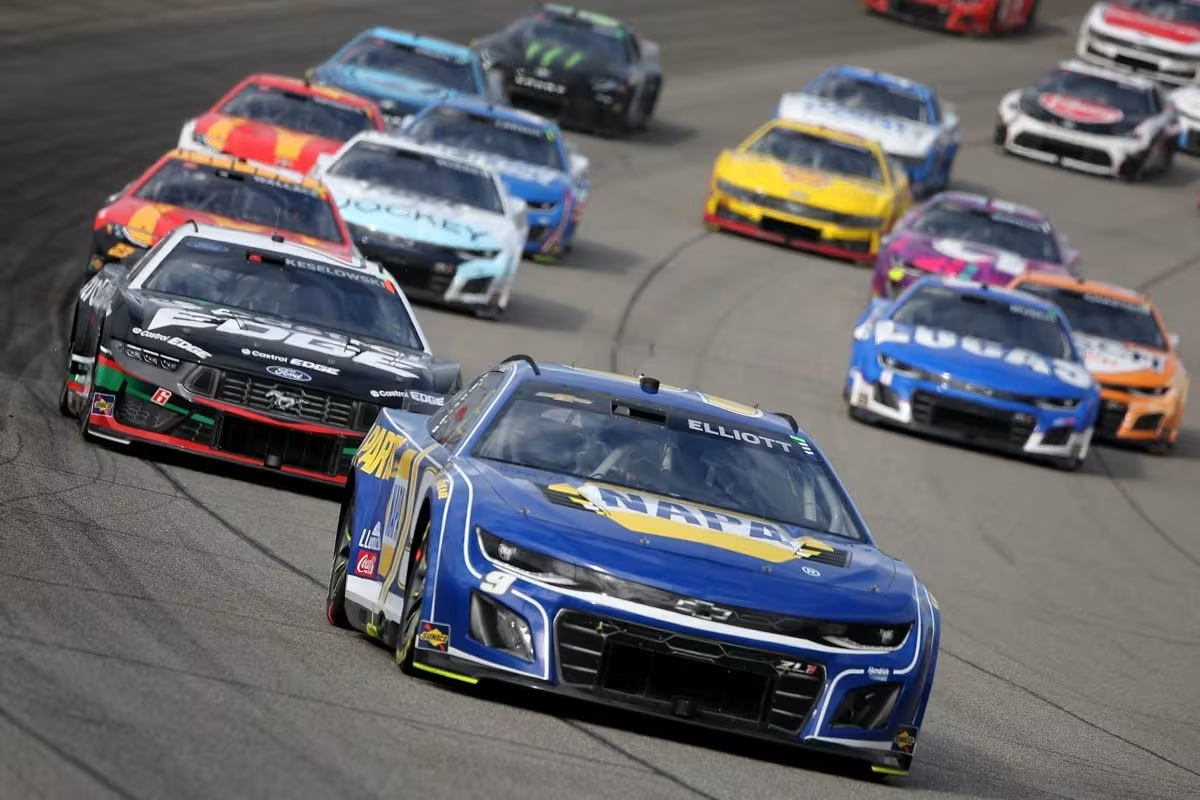Mark Martin’s Brutal Take on the NASCAR Next Gen Car: The introduction of NASCAR’s Next Gen car has ignited a firestorm of debate, with Mark Martin’s pointed critique serving as a focal point for many fans and drivers. His concerns extend beyond mere aesthetics, touching on crucial issues of safety and performance that challenge the very essence of NASCAR’s storied identity. Martin’s call for notable modifications raises essential questions about the future direction of the sport and its commitment to both innovation and tradition.
Key Highlights
- Mark Martin criticizes the Next Gen car’s aesthetic, arguing it lacks the unique character and identity of traditional NASCAR vehicles.
- Safety concerns arise from the car’s design, highlighted by incidents like Kurt Busch’s concussion due to the redesigned rear bumper.
- Martin advocates for reducing downforce and eliminating the underbody to enhance driver skill and improve competition on the track.
- The shift in number placement from the middle door to the rear quarter panel is seen as an unattractive move that undermines NASCAR’s heritage.
- Ongoing debates among drivers about car modifications reflect broader concerns over the impact of technology on racing authenticity and dynamics.
Ongoing Criticism of the Next Gen Car
The ongoing criticism of NASCAR’s Next Gen car reflects a confluence of safety concerns, performance issues, and aesthetic disapproval that has persisted since its introduction in 2022. Central to the discourse is the safety of the vehicle, particularly following high-profile incidents that have raised alarms among drivers and teams similarly. Critics argue that the car’s design compromises driver protection, a crucial component of NASCAR’s reputation for prioritizing safety.
Performance challenges have also emerged, with many drivers lamenting the reduced horsepower that affects the competitive landscape. The introduction of single-source parts aims to create parity across the field; however, it has inadvertently led to a reduction in the ability to pass, stifling the thrilling on-track battles that fans crave. This has sparked discontent among purists who argue that the essence of racing has been diluted, diminishing the tactical subtleties that make the sport compelling.
Furthermore, aesthetic concerns have not gone unnoticed. Many enthusiasts express dissatisfaction with the visual appeal of the Next Gen car, arguing that it lacks the character and identity of its predecessors. This critique is particularly poignant in a sport where the car’s image plays a notable role in branding and fan engagement.
Mark Martin’s Disappointment
While many fans and experts likewise have weighed in on NASCAR’s Next Gen car, veteran driver Mark Martin stands out as a particularly vocal critic. With an esteemed career that includes 40 Cup Series victories, Martin’s insights carry considerable weight, particularly given his extensive experience witnessing the evolution of NASCAR’s vehicles over the decades. His disappointment with the Next Gen car reflects a profound concern not only for the performance aspects but also for the general aesthetic and identity of the sport.
Martin’s critique centers on what he perceives as a departure from the heritage and visual appeal that characterized previous generations of NASCAR vehicles. He argues that the current design lacks the distinctive flair that once captured the essence of racing. This sentiment resonates with long-time fans who yearn for a return to a more traditional style, indicative of NASCAR’s roots. Martin believes that the Next Gen car’s design choices, while perhaps intended to modernize the sport, have inadvertently diluted its character.
Furthermore, Martin’s call for a “fashion revolution” highlights a broader conversation about how aesthetics influence fan engagement and brand identity. He posits that a car’s appearance is integral to its connection with fans, asserting that NASCAR’s future success hinges on balancing innovation with respect for its storied past.
Critique of Number Placement and Design
Amidst the ongoing discussions surrounding NASCAR’s Next Gen car, the critique of number placement and design has emerged as a focal point of disagreement among drivers and fans likewise. The controversial decision to shift car numbers from the traditional middle door position to the rear quarter panel has drawn considerable scrutiny, particularly from NASCAR legend Mark Martin. His vehement assertion that “It’s ugly! It doesn’t look like a race car” highlights the emotional resonance this issue holds for many within the racing community.
“Move the numbers to the middle of the door. I don’t care who likes it, or who don’t like it…It’s ugly! It doesn’t look like a race car. It looks stupid.”
“The sponsors were there…and they’re still there on the Xfinity cars, still there on ARCA cars…It doesn’t make that much difference. They spoiled them by giving’em what they gave. Put the number back where it’s supposed to be.” Martin
This is going to piss a few people off but 🤷🏼 pic.twitter.com/PuFxN8MGku
— Mark Martin (@markmartin) September 23, 2024
The crux of Martin’s argument pivots on several key points:
- Aesthetic Value: Martin emphasizes that the new design compromises the iconic look of a race car, believing it detracts from the sport’s heritage.
- Sponsorship Misconceptions: He contests NASCAR’s rationale that the shift improves sponsorship visibility, citing successful sponsorship models in other racing series where traditional number placement is maintained.
- Driver Safety Concerns: The introduction of a redesigned rear bumper has already raised safety issues, exemplified by Kurt Busch’s concussion following a rear impact.
These points highlight a broader discontent with the Next Gen car’s design philosophy, which many perceive as prioritizing commercial interests over both the sport’s legacy and driver safety.
As NASCAR navigates this contentious terrain, the debate around number placement continues to serve as a litmus test for the sport’s commitment to its roots amidst modernization efforts.
Further Changes Suggested by Martin
Mark Martin’s criticisms of the Next Gen car extend beyond just number placement and aesthetics; he has articulated a series of supplementary changes that he believes could boost both the performance and visual appeal of the vehicles. His insights reflect a deep understanding of race car dynamics, emphasizing not only how the cars look but also how they perform on the track.
One of Martin’s notable points is the elimination of the underbody, which he argues detracts from the car’s performance and visual identity. He also takes issue with the narrow bumper design, suggesting that widening it could improve the car’s aesthetics and complete driving experience. According to Martin, the current design resembles that of lower-tier series like ARCA and Xfinity, which he believes undermines the prestige of the Cup series.
“Get rid of the damn underbody – they don’t need that stuff.”
“Then, widen the back bumper out some…It looks stupid – doesn’t look like a race car. ARCA cars…Xfinity cars look like race cars…Too narrow, sucks in behind the tires. And by the way, that would make the drivers drive a little bit better if they widen that out. Then when they take the downforce off, maybe they wouldn’t cry as much about it.” – Martin
Through these recommendations, Martin not only critiques the existing design but also presents a vision for how NASCAR can evolve while maintaining its competitive integrity and visual heritage.
Historical Context of Bumper Issues and Current Concerns
The history of bumper-related incidents in NASCAR reveals a complex interplay between safety measures and competitive racing dynamics. Remarkably, the early 2000s marked a substantial transformation in NASCAR, as improved safety protocols emerged alongside escalating risks associated with high-speed collisions. The phenomenon of “rubbing bumpers” often led to catastrophic outcomes, demonstrating both the thrilling and perilous nature of the sport. The tragic death of Dale Earnhardt during the 2001 Daytona 500 exemplified these dangers, while incidents at tracks like Bristol Motor Speedway highlighted the challenges of competitive racing in confined spaces.
Key factors contributing to these bumper issues include:
- Inexperienced Drivers: The presence of less experienced drivers can exacerbate the risks of bumper-related incidents.
- High-Impact Crashes: Tracks designed for close racing increase the frequency of collisions, as seen in the Jimmie Johnson-Jeff Burton incident.
- Evolving Vehicle Designs: The introduction of the Next Gen car has shifted the dynamics of racing, raising concerns among veterans regarding safety and competitive integrity.
“If you want to talk about how close the cars are, how competitive they are, put 43 cars at Bristol, separate them by three-tenths of a second, you’re going to have wrecks.”
“At the end of the day, what we do is competitive, and what we do is exciting to watch, and what we do borders on craziness, and that’s why it’s fun to watch.” – Burton
As NASCAR progresses into the era of the Next Gen car, the lingering apprehensions surrounding bumper-related accidents remain a focal point for drivers and fans in a similar manner.
The challenge lies in balancing the excitement of close competition with the imperative of driver safety. The future direction of NASCAR may hinge on addressing these concerns while preserving the sport’s exhilarating essence.
News in Brief: Mark Martin’s Brutal Take on the NASCAR Next Gen Car
The controversy surrounding NASCAR’s Next Gen car emphasizes considerable tensions between innovation and tradition within the sport. Mark Martin’s critique highlights critical safety concerns and a perceived detachment from the aesthetic elements that have historically attracted fans. Addressing these issues, particularly the design of the underbody and rear bumper, may be crucial in aligning the vehicle’s performance with the expectations of both drivers and supporters. The ongoing debate reflects a broader struggle to maintain NASCAR’s identity amidst evolving automotive technology.
ALSO READ: Denny Hamlin Criticizes NASCAR’s Next Gen Cars: “Worst Cars in NASCAR”



